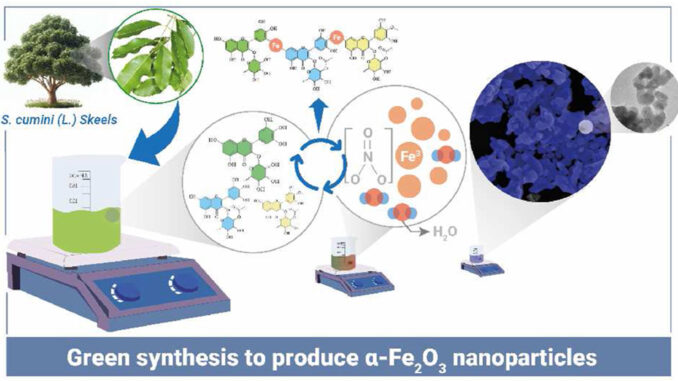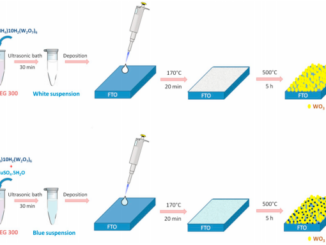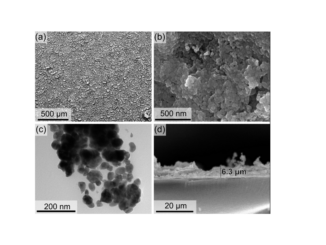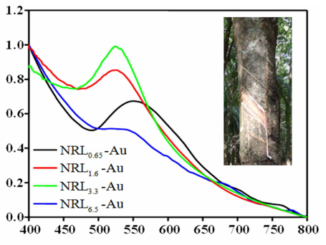
Synthesis of hematite (α-Fe2O3) nanoparticles using Syzygium cumini extract: Photodegradation of norfloxacin and enhanced recyclability
Abstract: In this study, we report obtaining α-Fe2O3 nanoparticles by a green synthesis method using different concentrations of Syzygium cumini (L.) Skeels (Myrtaceae) leaf extract. X-ray diffraction (XRD) analysis of materials confirmed the presence of pure hematite phase α-Fe2O3 without any impurities. In addition, scanning electron microscopy (SEM) and transmission electron microscopy (TEM) techniques revealed almost spherical NPs’ morphology. At the same time, it was clear from the dispersive energy X-ray (EDS) technique that no other chemical elements were present in the sample. On the other hand, the band gap energy obtained from the materials was 1.9 and 2.0 eV. The photodegradation tests showed a photocatalytic efficiency of 96 % for the sample produced with the lowest extract concentration. The mineralization rate of norfloxacin was 32.5 %, as indicated by the Total Organic Carbon tests. In addition, its potential to generate reactive oxygen species that aid in the degradation of the pharmaceutical contaminant has been confirmed.
Author(s): Davi S. Ferreira, Gleison N. Marques, Adrianadas Mercês P. Ferreira, Marcelo M. Oliveira , Cláudia Q. da Rocha, Ailton J. Moreira, Carlos H.M. Fernandes, Marcos R. Lanza, Maria Inês B. Bernardi, Lucia H. Mascaro, José Hilton G. Rangel.
Materials Chemistry and Physics
Published: 15 February 2025, Volume 332, 130281




